The β-lactam antibiotic resistance has become a critical global health threat. One of the major reasons for drug resistance is the expression of β-lactamases especially metallo-β-lactamases such as New Delhi metallo-β-lactamase (NDM-1) by Gram-negative bacteria. The fungal natural product aspergillomarasmine A (AMA) was found to be a promising inhibitor of NDM-1 to potentiate currently used β-lactam antibiotics to overcome drug resistance both in vitro and in vivo. Although several chemical synthesis and chemoenzymatic synthesis approaches to access AMA have been reported, the biosynthesis of AMA was still elusive. Herein, we identified the key enzyme responsible for the biosynthesis of AMA in Aspergillus oryzae. AMA synthase is a PLP-dependent cysteine synthase homologous protein which utilizes O-acetyl-Lserine/O-phospho-L-serine and L-aspartic acid as its substrates. Remarkably, this enzyme catalyzes two consecutive C-N bond formations to produce AMA efficiently which may be attributed to the spacious substrate-binding pocket. PLP is covalently bound to Lys61 by an internal aldimine from the PLP re face, and the si face of PLP pyridine ring is accessible to the substrates to promote the nucleophilic addition of amino acids to the double bond of the external adiminine and ultimately to generate chiral Cα with S configuration. The catalytic mechanism was proposed based on molecular docking and biochemical experiments. In addition, we have further investigated the substrate scope of AMA synthase and identified a variant enzyme which shows promising potential in producing structurally diverse molecules containing C-N bond.
Tuberculosis (TB) is a life-threatening disease resulting in an estimated 10 million new infections and 1.8 million deaths annually, primarily in underdeveloped countries. The economic burden of TB has been estimated as approximately 12 billion USD annually in direct and indirect costs. Additionally, multi-drug-resistant (MDR) and extreme-drug-resistant (XTR) TB strains resulting in about 250 000 deaths annually are now widespread, increasing pressure on the identification of new anti-TB agents that operate by a novel mechanism of action. Chrysomycin A is a rare C-aryl glycoside first discovered over 60 years ago. In a recent highthroughput screen, we found that chrysomycin A has potent anti-TB activity, with minimum inhibitory concentration (MIC) = 0.4 μg/mL against MDR-TB strains. However, chrysomycin A is obtained in low yields from fermentation of Streptomyces, and the mechanism of action of this compound is unknown. To facilitate the mechanism of action and preclinical studies of chrysomycin A, we developed a 10-step, scalable synthesis of the isolate and its two natural congeners polycarcin V and gilvocarcin V. The synthetic sequence was enabled by the implementation of two sequential C−H functionalization steps as well as a late-stage C-glycosylation. In addition, >10 g of the advanced synthetic intermediate has been prepared, which greatly facilitated the synthesis of 33 new analogues to date. The structure−activity relationship was subsequently delineated, leading to the identification of derivatives with superior potency against MDR-TB (MIC = 0.08 μg/mL). The more potent derivatives contained a modified carbohydrate residue which suggests that further optimization is additionally possible. The chemistry we report here establishes a platform for the development of a novel class of anti-TB agents active against drug-resistant pathogens.
Late-stage diversification of natural products is an efficient way to generate natural product derivatives for drug discovery and chemical biology. Benefiting from the development of site-selective synthetic methodologies, late-stage diversification of natural products has achieved notable success. This outlook will outline selected examples of novel methodologies for site-selective transformations of reactive functional groups and inert C–H bonds that enable late-stage diversification of complex natural products. Accordingly, late-stage diversification provides an opportunity to rapidly access various derivatives for modifying lead compounds, identifying cellular targets, probing protein–protein interactions, and elucidating natural product biosynthetic relationships.
Yingjie Bai, Hiu C. Lam, and Xiaoguang Lei*
Acc. Chem. Rev. 2020, https://doi.org/10.1021/acs.accounts.9b00600
we developed a biomimetic synthetic strategy based on diverse Diels–Alder reactions in the total syntheses of ainsliadimers A and B, ainsliatrimers A and B, and gonchnatiolides A–C, which are natural product inhibitors or activators for PCD. Using synthetic ainsliadimer A probe, we elucidated that ainsliadimer A inhibits the NF-κB pathway by covalently binding to Cys46 of IKKβ and triggers apoptosis of cancer cells. We have also revealed that IKKβ is allosterically inhibited by ainsliadimer A. In addition to total synthesis, we have developed a bioorthogonal click hetero-Diels–Alder cycloaddition of vinyl thioether and o-quinolinone quinone methide (TQ-ligation) to facilitate small molecule target identification. The combination of total synthesis and TQ-ligation enables subcellular imaging and identification of the cellular target of ainsliatrimer A to be PPARγ. In addition, TQ-ligation has been applied in the discovery of heat shock protein 90 (HSP90) as one of the functional target proteins for kongensin A. We also confirmed that kongensin A covalently attaches to Cys420 within HSP90 and demonstrated that kongensin A blocks the interaction between HSP90 and CDC37 and subsequently inhibits necroptosis. Our development of these diverse PCD modulators provides not only effective chemical tools for fundamental biomedical research, but also the foundation for drug discovery targeting important human diseases such as cancers and inflammation caused by malfunction of PCD.
Plants deploy a variety of secondary metabolites to fend off pathogen attack. Although defense compounds are generally considered toxic to microbes, the exact mechanisms are often unknown. Here, we show that the Arabidopsis defense compound sulforaphane (SFN) functions primarily by inhibiting Pseudomonas syringae type III secretion system (TTSS) genes, which are essential for pathogenesis. Plants lacking the aliphatic glucosinolate pathway, which do not accumulate SFN, were unable to attenuate TTSS gene expression and exhibited increased susceptibility to P. syringae strains that cannot detoxify SFN. Chemoproteomics analyses showed that SFN covalently modified the cysteine at position 209 of HrpS, a key transcription factor controlling TTSS gene expression. Site-directed mutagenesis and functional analyses further confirmed that Cys209 was responsible for bacterial sensitivity to SFN in vitro and sensitivity to plant defenses conferred by the aliphatic glucosinolate pathway. Collectively, these results illustrate a previously unknown mechanism by which plants disarma pathogenic bacterium
Xiaoyun Zhang, Shuo-Qing Zhang, Qiang Li, Fan Xiao, Zongwei Yue, Xin Hong,* and Xiaoguang Lei*
Org. Lett. 2020, 22, 8, 2920-2924
We report here a deep mechanistic study of the “click” ortho-quinone methide (oQM) cycloaddition between orthoquinolinone quinone methide (oQQM) and thio-vinyl ether (TV), named as TQ-ligation. DFT calculations revealed the unexpected fact that dehydration of oQQM precursors is the rate-determining step of this transformation, and two highly reactive oQQM precursors were predicted. Guided by the calculations, a new “click” oQM cycloaddition which shows significantly improved kinetics and remarkable efficiency on protein labeling was developed.
Liu Q, Yu J, Wang L, Tang Y, Zhou Q, Ji S, Wang Y, Santos L, Haeusler RA, Que J, Rajbhandari P, Lei X, Valenti L, Pajvani UB, Qin J, Qiang L
Journal of Hepatology 2020, doi:10.1016/j.jhep.2020.02.025
Dependence on the 26S proteasome is an Achilles’ heel for triplenegative breast cancer (TNBC) andmultiplemyeloma (MM). The therapeutic proteasome inhibitor, bortezomib, successfully targets MM but often leads to drug-resistant disease relapse and fails in breast cancer. Here we show that a 26S proteasome-regulating kinase, DYRK2, is a therapeutic target for both MM and TNBC. Genome editing or small-molecule mediated inhibition of DYRK2 significantl reduces 26S proteasome activity, bypasses bortezomib resistance, and dramatically delays in vivo tumor growth in MM and TNBC thereby promoting survival. We further characterized the ability of LDN192960, a potent and selective DYRK2-inhibitor, to alleviate tumor burden in vivo. The drug docks into the active site of DYRK2 and partially inhibits all 3 core peptidase activities of the proteasome. Our results suggest that targeting 26S proteasome regulators will pave the way for therapeutic strategies in MM and TNBC.
Analytica Chimica Acta,Volume 1102, 15 March 2020, Pages 53-62,https://doi.org/10.1016/j.aca.2019.12.036
Chemical cross-linking would conceivably cause structural disruption of a protein, but few cross-linkers have been fully evaluated in this aspect. Furthermore, integral membrane proteins may differ from soluble proteins in the selection of suitable cross-linkers, which has never been investigated. In this study, we systematically evaluated the impact of five conventional cross-linkers targeting Lys, Asp and Glu, and two Arg-reactive cross-linkers on the structural and functional integrity of two G protein-coupled receptors (GPCRs). Perturbation of the receptor structure and ligand-binding activity was observed, depending on the receptor and cross-linking conditions. In particular, our study demonstrated that the concentrations of PDH and KArGO need to be fine-tuned in order to minimize the structural and functional disturbance of specific GPCRs. A set of amenable cross-linkers was selected to acquire the most comprehensive cross-link maps for two GPCRs. Our in-depth cross-linking mass spectrometry (CXMS) analysis has revealed dynamic features of structural regions in GPCRs that are not observable in the crystal structures. Thus, CXMS analysis of GPCRs using the expanded toolkit would facilitate structural modeling of uncharacterized receptors and gain new insights into receptor-ligand interactions.
Pornphimol Meesakul, Wuttichai Jaidee, Christopher Richardson, Raymond J. Andersen, Brian O.Patrick, Anthony C.Willis, Chatchai Muanprasat, Jin Wang, Xiaoguang Lei, Sarinya Hadsadee, Siriporn Jungsuttiwong, Stephen G.Pyne, Surat Laphookhieo
Phytochemistry, 2020, 171, 112248 https://doi.org/10.1016/j.phytochem.2019.112248
The phytochemical investigation of the twig and leaf extracts of Goniothalamus tamirensis led to the isolation and identification of 15 compounds including three rare previously undescribed styryllactones, goniotamirenones A-C, together with 12 known compounds. (Z)-6-Styryl-5,6-dihydro-2-pyranone and 5-(1-hydroxy-3-phenyl-allyl)-dihydro-furan-2-one are reported here for the first time as previously undescribed natural products. Their structures were elucidated by spectroscopic methods. Goniotamirenone A was synthesized via a [2 + 2] cycloaddition reaction of 6-styrrylpyran-2-one in quantitative yield. The absolute configurations of goniotamirenones B and C were identified from experimental and calculated ECD data, while the absolute configurations of (−)–5-acetoxygoniothalamin, (−)-isoaltholactone, parvistone E, and 5-(1-hydroxy-3-phenyl-allyl)-dihydro-furan-2-one were identified by single-crystal X-ray diffraction analysis using Cu Kα radiation. The absolute configurations of the other related compounds were determined from comparisons of their ECD spectra with relevant compounds reported in the literature. (−)–5-Acetoxygoniothalamin exhibited potent cytotoxicity against the colon cancer cell line (HCT116) with an IC50 value of 8.6 μM which was better than the standard control (doxorubicin, IC50 = 9.7 μM), while (Z)-6-styryl-5,6-dihydro-2-pyranone was less active with an IC50 value of 22.1 μM.
Jin Wang, Benke Hong, Dachao Hu, Yuichiro Kadonaga, Ruyao Tang, Xiaoguang Lei*
J. Am. Chem. Soc. 2020, 142, 5, 2238-2243
The Yu's Rh-catalyzed [3+2+1] cycloaddition followed by a Pd-mediated 5-endo cycloalkenylation is shown to be a general and powerful approach for efficient construction of the tetracyclic core structure of ent-kaurane diterpenoids. The utility of this strategy was further demonstrated by concise and protecting-group-free total syntheses of ent-1α-hydroxykauran-12-one, 12-oxo-9,11-dehydrokaurene, and 12α-hydroxy-9,11-dehydrokaurene.
-
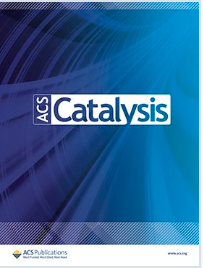
-

-
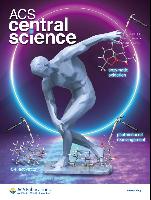
-

-
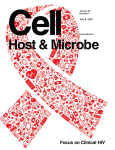
-
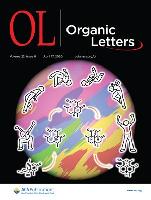
-
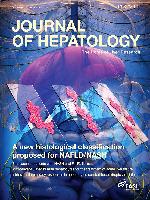
-
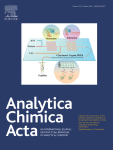
-
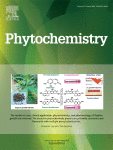
-
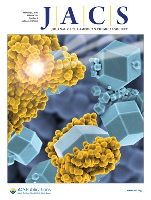
Identification of the AMA Synthase from the Aspergillomarasmine A Biosynthesis and Evaluation of Its Biocatalytic Potential
Qianqian Guo, Dongshan Wu, Lei Gao, Yingjie Bai, Yuan Liu, Nianxin Guo, Xiaoxia Du, Jun Yang, Xiaoming Wang, and Xiaoguang Lei
ACS Catal. 2020, https://doi/10.1021/acscatal.0c01187
The β-lactam antibiotic resistance has become a critical global health threat. One of the major reasons for drug resistance is the expression of β-lactamases especially metallo-β-lactamases such as New Delhi metallo-β-lactamase (NDM-1) by Gram-negative bacteria. The fungal natural product aspergillomarasmine A (AMA) was found to be a promising inhibitor of NDM-1 to potentiate currently used β-lactam antibiotics to overcome drug resistance both in vitro and in vivo. Although several chemical synthesis and chemoenzymatic synthesis approaches to access AMA have been reported, the biosynthesis of AMA was still elusive. Herein, we identified the key enzyme responsible for the biosynthesis of AMA in Aspergillus oryzae. AMA synthase is a PLP-dependent cysteine synthase homologous protein which utilizes O-acetyl-Lserine/O-phospho-L-serine and L-aspartic acid as its substrates. Remarkably, this enzyme catalyzes two consecutive C-N bond formations to produce AMA efficiently which may be attributed to the spacious substrate-binding pocket. PLP is covalently bound to Lys61 by an internal aldimine from the PLP re face, and the si face of PLP pyridine ring is accessible to the substrates to promote the nucleophilic addition of amino acids to the double bond of the external adiminine and ultimately to generate chiral Cα with S configuration. The catalytic mechanism was proposed based on molecular docking and biochemical experiments. In addition, we have further investigated the substrate scope of AMA synthase and identified a variant enzyme which shows promising potential in producing structurally diverse molecules containing C-N bond.
Chrysomycin A Derivatives for the Treatment of Multi-Drug- Resistant Tuberculosis
Fan Wu, Jing Zhang, Fuhang Song, Sanshan Wang, Hui Guo, Qi Wei, Huanqin Dai, Xiangyin Chen, Xuekui Xia, Xueting Liu, Lixin Zhang, Jin-Quan Yu, and Xiaoguang Lei*
ACS Cent. Sci. 2020, https://dx.doi.org/10.1021/acscentsci.0c00122
Tuberculosis (TB) is a life-threatening disease resulting in an estimated 10 million new infections and 1.8 million deaths annually, primarily in underdeveloped countries. The economic burden of TB has been estimated as approximately 12 billion USD annually in direct and indirect costs. Additionally, multi-drug-resistant (MDR) and extreme-drug-resistant (XTR) TB strains resulting in about 250 000 deaths annually are now widespread, increasing pressure on the identification of new anti-TB agents that operate by a novel mechanism of action. Chrysomycin A is a rare C-aryl glycoside first discovered over 60 years ago. In a recent highthroughput screen, we found that chrysomycin A has potent anti-TB activity, with minimum inhibitory concentration (MIC) = 0.4
μg/mL against MDR-TB strains. However, chrysomycin A is obtained in low yields from fermentation of Streptomyces, and the mechanism of action of this compound is unknown. To facilitate the mechanism of action and preclinical studies of chrysomycin A, we developed a 10-step, scalable synthesis of the isolate and its two natural congeners polycarcin V and gilvocarcin V. The synthetic
sequence was enabled by the implementation of two sequential C−H functionalization steps as well as a late-stage C-glycosylation. In addition, >10 g of the advanced synthetic intermediate has been prepared, which greatly facilitated the synthesis of 33 new analogues to date. The structure−activity relationship was subsequently delineated, leading to the identification of derivatives with
superior potency against MDR-TB (MIC = 0.08 μg/mL). The more potent derivatives contained a modified carbohydrate residue which suggests that further optimization is additionally possible. The chemistry we report here establishes a platform for the development of a novel class of anti-TB agents active against drug-resistant pathogens.
Late-Stage Diversification of Natural Products
Benke Hong, Tuoping Luo, Xiaoguang Lei*
ACS Cent. Sci. (Cover Story) https://doi.org/10.1021/acscentsci.9b00916
Late-stage diversification of natural products is an efficient way to generate natural product derivatives for drug discovery and chemical biology. Benefiting from the development of site-selective synthetic methodologies, late-stage diversification of natural products has achieved notable success. This outlook will outline selected examples of novel methodologies for site-selective transformations of reactive functional groups and inert C–H bonds that enable late-stage diversification of complex natural products. Accordingly, late-stage diversification provides an opportunity to rapidly access various derivatives for modifying lead compounds, identifying cellular targets, probing protein–protein interactions, and elucidating natural product biosynthetic relationships.
Dissecting Programmed Cell Death with Small Molecules
Yingjie Bai, Hiu C. Lam, and Xiaoguang Lei*
Acc. Chem. Rev. 2020, https://doi.org/10.1021/acs.accounts.9b00600
we developed a biomimetic synthetic strategy based on diverse Diels–Alder reactions in the total syntheses of ainsliadimers A and B, ainsliatrimers A and B, and gonchnatiolides A–C, which are natural product inhibitors or activators for PCD. Using synthetic ainsliadimer A probe, we elucidated that ainsliadimer A inhibits the NF-κB pathway by covalently binding to Cys46 of IKKβ and triggers apoptosis of cancer cells. We have also revealed that IKKβ is allosterically inhibited by ainsliadimer A. In addition to total synthesis, we have developed a bioorthogonal click hetero-Diels–Alder cycloaddition of vinyl thioether and o-quinolinone quinone methide (TQ-ligation) to facilitate small molecule target identification. The combination of total synthesis and TQ-ligation enables subcellular imaging and identification of the cellular target of ainsliatrimer A to be PPARγ. In addition, TQ-ligation has been applied in the discovery of heat shock protein 90 (HSP90) as one of the functional target proteins for kongensin A. We also confirmed that kongensin A covalently attaches to Cys420 within HSP90 and demonstrated that kongensin A blocks the interaction between HSP90 and CDC37 and subsequently inhibits necroptosis. Our development of these diverse PCD modulators provides not only effective chemical tools for fundamental biomedical research, but also the foundation for drug discovery targeting important human diseases such as cancers and inflammation caused by malfunction of PCD.
An Arabidopsis Secondary Metabolite Directly Targets Expression of the Bacterial Type III Secretion System to Inhibit Bacterial Virulence
Wei Wang, Jing Yang, Jian Zhang, Yong-Xin Liu, Caiping Tian, Baoyuan Qu, Chulei Gao, Peiyong Xin, Shujing Cheng, Wenjing Zhang, Pei Miao, Lei Li, Xiaojuan Zhang, Jinfang Chu,Jianru Zuo, Jiayang Li, Yang Bai, Xiaoguang Lei,* and Jian-Min Zhou*
Cell Host & Microbe 2020, 27(4), 601–613.e7
Plants deploy a variety of secondary metabolites to fend off pathogen attack. Although defense compounds are generally considered toxic to microbes, the exact mechanisms are often unknown. Here, we show that the Arabidopsis defense compound sulforaphane (SFN) functions primarily by inhibiting Pseudomonas syringae type III secretion system (TTSS) genes, which are essential for pathogenesis. Plants lacking the aliphatic glucosinolate pathway, which do not accumulate SFN, were unable to attenuate TTSS gene expression and exhibited increased susceptibility to P. syringae strains that cannot detoxify SFN. Chemoproteomics analyses showed that SFN covalently modified the cysteine at position 209 of HrpS, a key transcription factor controlling TTSS gene expression. Site-directed mutagenesis and functional analyses further confirmed that Cys209 was responsible for bacterial sensitivity to SFN in vitro and sensitivity to plant defenses conferred by the aliphatic glucosinolate pathway. Collectively, these results illustrate a previously unknown mechanism by which plants disarma pathogenic bacterium
Computation-Guided Development of the “Click” ortho-Quinone Methide Cycloaddition with Improved Kinetics
Xiaoyun Zhang, Shuo-Qing Zhang, Qiang Li, Fan Xiao, Zongwei Yue, Xin Hong,* and Xiaoguang Lei*
Org. Lett. 2020, 22, 8, 2920-2924
We report here a deep mechanistic study of the “click” ortho-quinone methide (oQM) cycloaddition between orthoquinolinone quinone methide (oQQM) and thio-vinyl ether (TV), named as TQ-ligation. DFT calculations revealed the unexpected fact that dehydration of oQQM precursors is the rate-determining step of this transformation, and two highly reactive oQQM
precursors were predicted. Guided by the calculations, a new “click” oQM cycloaddition which shows significantly improved kinetics and remarkable efficiency on protein labeling was developed.
Inhibition of PU.1 ameliorates metabolic dysfunction and non-alcoholic steatohepatitis
Liu Q, Yu J, Wang L, Tang Y, Zhou Q, Ji S, Wang Y, Santos L, Haeusler RA, Que J, Rajbhandari P, Lei X, Valenti L, Pajvani UB, Qin J, Qiang L
Journal of Hepatology 2020, doi:10.1016/j.jhep.2020.02.025
Dependence on the 26S proteasome is an Achilles’ heel for triplenegative breast cancer (TNBC) andmultiplemyeloma (MM). The therapeutic proteasome inhibitor, bortezomib, successfully targets MM but often leads to drug-resistant disease relapse and fails in breast cancer. Here we show that a 26S proteasome-regulating kinase, DYRK2, is a therapeutic target for both MM and TNBC. Genome editing or small-molecule mediated inhibition of DYRK2 significantl reduces 26S proteasome activity, bypasses bortezomib resistance, and dramatically delays in vivo tumor growth in MM and TNBC thereby promoting survival. We further characterized the ability of LDN192960, a potent and selective DYRK2-inhibitor, to alleviate tumor
burden in vivo. The drug docks into the active site of DYRK2 and partially inhibits all 3 core peptidase activities of the proteasome. Our results suggest that targeting 26S proteasome regulators will pave the way for therapeutic strategies in MM and TNBC.
Evaluation of chemical cross-linkers for in-depth structural analysis of G protein-coupled receptors through cross-linking mass spectrometry
LishaXia,ZiliangMa,JiahuiTong,YuliangTang,ShanshanLi,ShanshanQin,RonghuiLou,SuwenZhao,XiaoguangLei,WenqingShui,
Analytica Chimica Acta,Volume 1102, 15 March 2020, Pages 53-62,https://doi.org/10.1016/j.aca.2019.12.036
Chemical cross-linking would conceivably cause structural disruption of a protein, but few cross-linkers have been fully evaluated in this aspect. Furthermore, integral membrane proteins may differ from soluble proteins in the selection of suitable cross-linkers, which has never been investigated. In this study, we systematically evaluated the impact of five conventional cross-linkers targeting Lys, Asp and Glu, and two Arg-reactive cross-linkers on the structural and functional integrity of two G protein-coupled receptors (GPCRs). Perturbation of the receptor structure and ligand-binding activity was observed, depending on the receptor and cross-linking conditions. In particular, our study demonstrated that the concentrations of PDH and KArGO need to be fine-tuned in order to minimize the structural and functional disturbance of specific GPCRs. A set of amenable cross-linkers was selected to acquire the most comprehensive cross-link maps for two GPCRs. Our in-depth cross-linking mass spectrometry (CXMS) analysis has revealed dynamic features of structural regions in GPCRs that are not observable in the crystal structures. Thus, CXMS analysis of GPCRs using the expanded toolkit would facilitate structural modeling of uncharacterized receptors and gain new insights into receptor-ligand interactions.
Styryllactones from Goniothalamus tamirensis
Pornphimol Meesakul, Wuttichai Jaidee, Christopher Richardson, Raymond J. Andersen, Brian O.Patrick, Anthony C.Willis, Chatchai Muanprasat, Jin Wang, Xiaoguang Lei, Sarinya Hadsadee, Siriporn Jungsuttiwong, Stephen G.Pyne, Surat Laphookhieo
Phytochemistry, 2020, 171, 112248 https://doi.org/10.1016/j.phytochem.2019.112248
The phytochemical investigation of the twig and leaf extracts of Goniothalamus tamirensis led to the isolation and identification of 15 compounds including three rare previously undescribed styryllactones, goniotamirenones A-C, together with 12 known compounds. (Z)-6-Styryl-5,6-dihydro-2-pyranone and 5-(1-hydroxy-3-phenyl-allyl)-dihydro-furan-2-one are reported here for the first time as previously undescribed natural products. Their structures were elucidated by spectroscopic methods. Goniotamirenone A was synthesized via a [2 + 2] cycloaddition reaction of 6-styrrylpyran-2-one in quantitative yield. The absolute configurations of goniotamirenones B and C were identified from experimental and calculated ECD data, while the absolute configurations of (−)–5-acetoxygoniothalamin, (−)-isoaltholactone, parvistone E, and 5-(1-hydroxy-3-phenyl-allyl)-dihydro-furan-2-one were identified by single-crystal X-ray diffraction analysis using Cu Kα radiation. The absolute configurations of the other related compounds were determined from comparisons of their ECD spectra with relevant compounds reported in the literature. (−)–5-Acetoxygoniothalamin exhibited potent cytotoxicity against the colon cancer cell line (HCT116) with an IC50 value of 8.6 μM which was better than the standard control (doxorubicin, IC50 = 9.7 μM), while (Z)-6-styryl-5,6-dihydro-2-pyranone was less active with an IC50 value of 22.1 μM.
Protecting-Group-Free Syntheses of ent-Kaurane Diterpenoids: [3+2+1] Cycloaddition/Cycloalkenylation Approach
Jin Wang, Benke Hong, Dachao Hu, Yuichiro Kadonaga, Ruyao Tang, Xiaoguang Lei*
J. Am. Chem. Soc. 2020, 142, 5, 2238-2243
The Yu's Rh-catalyzed [3+2+1] cycloaddition followed by a Pd-mediated 5-endo cycloalkenylation is shown to be a general and powerful approach for efficient construction of the tetracyclic core structure of ent-kaurane diterpenoids. The utility of this strategy was further demonstrated by concise and protecting-group-free total syntheses of ent-1α-hydroxykauran-12-one, 12-oxo-9,11-dehydrokaurene, and 12α-hydroxy-9,11-dehydrokaurene.